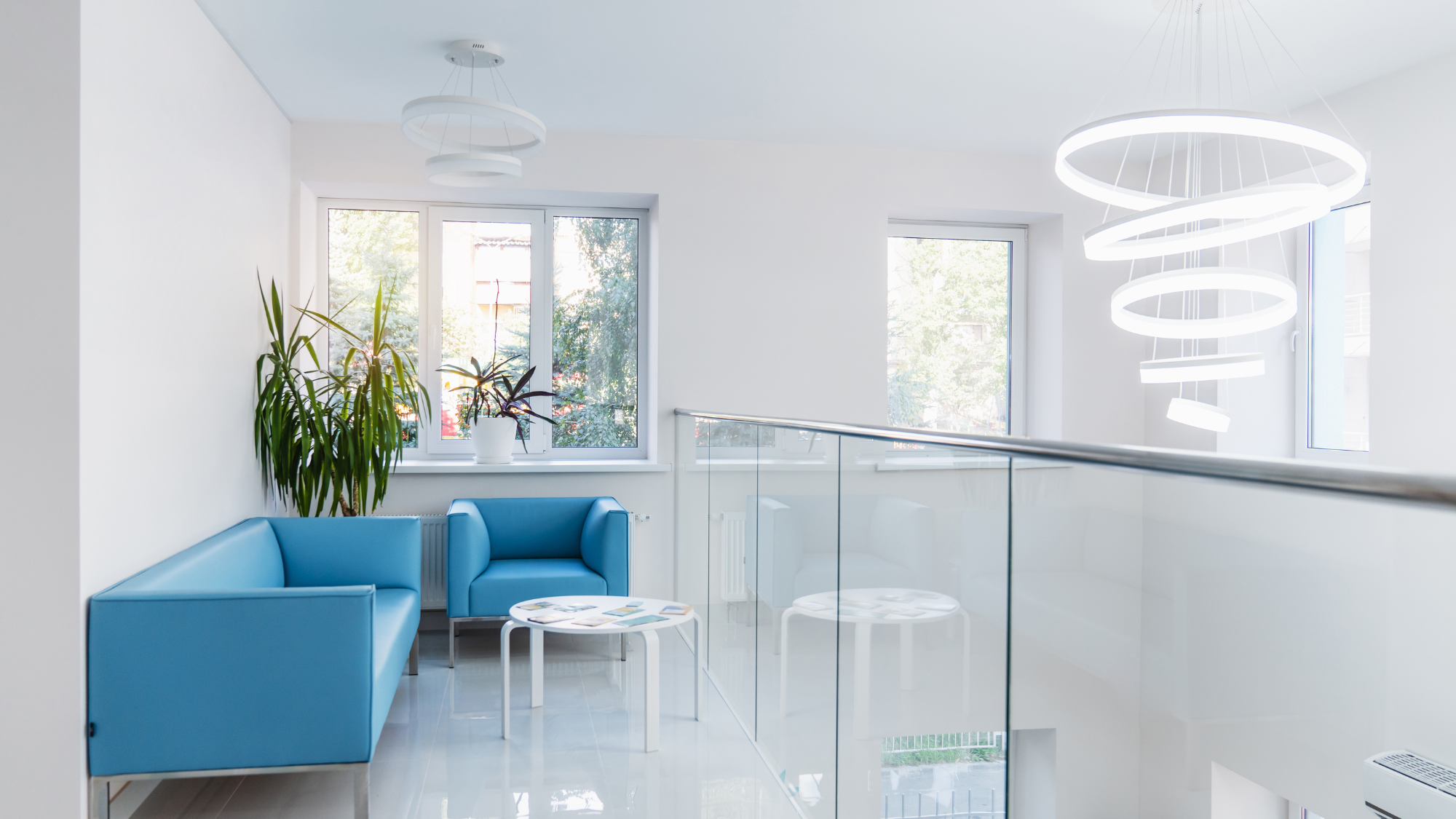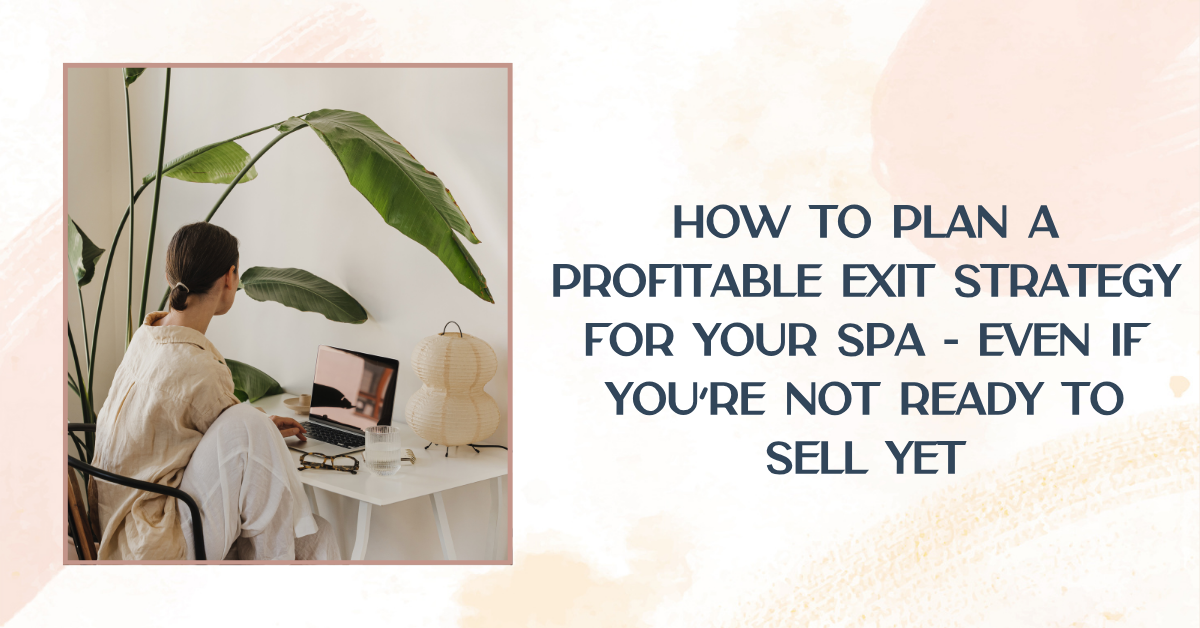When most spa owners open their business, they’re focused on growth, not the end game. Milestones like reaching six figures or hitting the elusive $1M mark take center stage. But what’s often missing from the conversation is a clear, strategic plan for how you’ll eventually step away.
Whether you’re thinking about selling, passing it down, or retiring altogether, one thing is clear: you need an exit strategy.
And what’s scary? Most spa owners are wildly unprepared.

Ask a room full of spa owners how they plan to exit their business, and you’ll likely get a lot of blank stares. It’s not that they don’t care. It’s just not on their radar. Emotional attachment, fear of the unknown, and the assumption that only multimillion-dollar spas get acquired can cloud the process.
But the cost of not planning is steep.
Without a strategy, spa owners risk burnout, financial loss, and leaving thousands (sometimes hundreds of thousands) of dollars on the table. Whether you’re operating as a solo aesthetician or managing a multi-location business, the time to plan is now – long before you’re “ready.”
Private equity has a growing interest in the aesthetics industry, but they typically target businesses generating $2M or more. That doesn’t mean smaller spas aren’t sellable. Far from it.
Let’s say your spa is generating $650K annually, and after ad-backs (like owner’s salary, travel, and other discretionary expenses), your net profit is $120K. That spa could potentially sell for $150K to $250K (or more) depending on its systems, recurring revenue, and team structure. That’s a meaningful return for many owners and a solid foundation for what comes next.

Ideally, a spa exit plan unfolds over 2–5 years. The first phase is all about structure: cleaning up your financials, removing yourself from operations, documenting your systems, and building recurring revenue. Think of this as setting the foundation.
It’s also about shifting your mindset. Emotional attachment, fear of “quitting,” and being the face of your brand can all create resistance. But remember—this is a business. One that can be bought, sold, and passed on. Getting clear on your goals now helps ensure you don’t end up stuck, overwhelmed, or forced into a last-minute fire sale.
Business valuations are based on multiples of your net profit—sometimes called EBITDA (earnings before interest, taxes, depreciation, and amortization). That number is adjusted with ad-backs to reflect the true earning power of your spa.
Smaller spas might sell for a 2x–3x multiple. Larger, well-structured spas could fetch 5x or more. But the number isn’t the only thing that matters. Buyers are looking for security, sustainability, and scalability. In other words, they want a business, not a job.
If your spa can’t operate without you, your valuation drops significantly.
Here’s what increases the value of your spa in a buyer’s eyes:
- Recurring Revenue: Memberships or subscription-based services show consistent, predictable income. A spa with 40% recurring revenue is significantly more attractive to buyers than one relying solely on à la carte services.
- Owner-Independent Operations: Can your spa run without you? A buyer wants to walk into a turnkey operation, not inherit a role they don’t want. Your ability to step out of day-to-day operations is key.
- Leadership Team: A strong spa manager or front desk supervisor adds confidence that the business can sustain without the original owner. Buyers want depth on the team, not just dependency on one or two people.
- Clean Financials: At least three years of clear, well-maintained books are essential. Buyers want transparency; profit margins, payroll, product costs, all of it.
- Documented Systems: From booking to retail, policies to onboarding, everything should be documented. SOPs (standard operating procedures) make it easier to train, transition, and scale.
- Diverse Revenue Streams: Don’t put all your eggs in one basket. Facials, injectables, retail, add-ons, memberships – diversification adds stability and lowers risk.

If you’re not in the $2M+ club, don’t worry—there’s still a robust market of buyers:
- Private Equity (for $2M+ spas): Firms looking for recurring revenue, multiple locations, or strong branding.
- Individual Buyers ($500K–$2M): Professionals who want to skip the startup phase and take over an existing business with proven cash flow.
- Local Spa Owners or Solo Estheticians (Under $500K): These buyers are often looking to expand their book of business and are happy to absorb your client base and keep you on for a smooth transition.
When it comes to the actual sale, there are different options:
- Cash Offers: Quick and clean, but less common—especially with larger price tags.
- Seller Financing: You become the “bank,” receiving a portion upfront and monthly payments with interest. It’s a great way to extend income into the future, but it comes with more risk.
It’s also important to understand the tax implications of each option. Work with a CPA to determine which strategy supports your financial goals long-term.

Even if selling feels like a distant idea, start tracking your exit readiness. Score yourself from 1 to 10 on:
- Owner independence
- Financial clarity
- System documentation
- Team readiness
- Recurring revenue
- Burnout levels
Pick one area to improve each quarter. Break it into small, achievable tasks. For example, hire a bookkeeper this quarter. Start documenting one SOP each day. Train your front desk into a true manager. Build up your memberships to 40% of total revenue.
This is how you build a spa that’s not just successful—but sellable.
Planning your exit isn’t about giving up. It’s about creating freedom on your terms. Whether you want to retire, start a new business, or simply create options, the decisions you make now determine what’s possible down the line.
Even if you’re not ready to sell yet, planning puts you in the CEO seat—exactly where you belong.

Subscribe to Our Newsletter
Stay up-to-date with our email newsletter to receive important updates, news, and offers!

About the Author
Daniela Woerner is the founder of Addo Aesthetics and creator of the Growth Factor® Framework, a proven system that’s helped hundreds of spa owners build profitable, systemized businesses. With nearly 20 years in the aesthetics industry, she transforms overworked service providers into confident Spa CEOs through strategy, systems, and soul-led support. Daniela is also the host of Spa Marketing Made Easy, a top-ranked podcast with over 1 million downloads, where she shares real-world strategies to help spa professionals grow with clarity and confidence.

